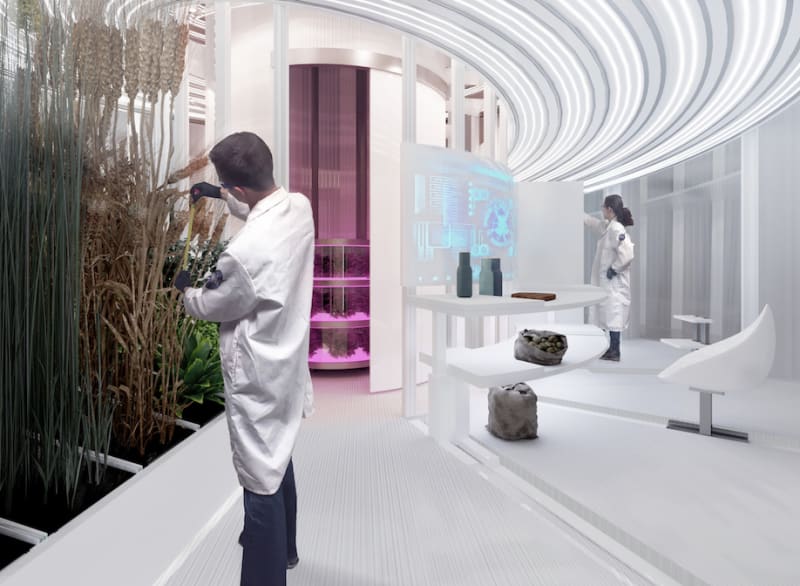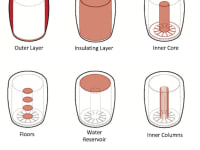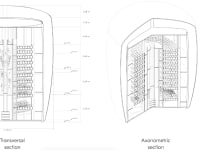
The demand for locally-sourced food, particularly in urban settings, has skyrocketed in recent years and is projected to continue climbing. However, as the population density of urban settings continues to increase worldwide, it is becoming less feasible to grow food locally because of the footprint it requires. This award-winning invention is a rapidly-deployable, innovative greenhouse design that can grow up to eight types of crops autonomously and efficiently. It utilizes a novel spiral architecture to grow crops vertically, rather than horizontally, to optimize its use of space. This design was originally developed by MIT engineers for a NASA competition to support a crew of astronauts on Mars. In spaceflight, every bit of volume is at a premium. Therefore, this design is well-suited for urban settings, where space is similarly limited.
This closed-loop ecosystem is optimized for sustainable, healthy crop production. It begins with the hydroponic growing system, which greatly simplifies its operation compared to traditional soil-based systems. The closed-loop setup allows for greater water efficiency and recovery. Up to eight crops can be grown simultaneously in the greenhouse, each with its own hydroponic track on the spiral. The crops begin as seedlings, planted robotically in their hydroponic trays. They are automatically moved to a germination cabinet in the center of the greenhouse, where they grow into germinated seedlings. Next, they are automatically lifted to the top of the greenhouse by a central lift and moved into the appropriate track. Over the course of the plant’s growing lifetime, it will slowly move down the spiral under the force of gravity until it reaches the bottom when it is fully grown. At this point, a simple robotic system harvests the plants, sterilizes the trays, and reseeds them, beginning the cycle again. The food is moved to a storage area on the ground floor for pickup by the owner.
The plants are fed water from a water reservoir on top of the greenhouse. A trickle of water – just enough to keep the roots wetted – continuously flows down the spirals. Custom nutrients are autonomously fed into each track from a nutrient mixing panel located next to the water bladder. Once at the bottom, the water is purified with a mesh filter and a reverse osmosis system before being pumped back to the water reservoir to begin its cycle again. LED lights are placed on the underside of the spiral to supplement natural light and allow for finely-tuned light spectra that optimize plant growth, regardless of the weather outside. The systems are powered with solar panels placed on top of the greenhouse.
The system features disease control measures, atmospheric control, plant health monitoring, and redundant systems to make the greenhouse robust. It can operate fully autonomously, only requiring someone to pick up the fresh food it produces. This is an efficient method to meet the growing demand for locally sourced food without requiring a large footprint in urban settings, and we thank you for your consideration as we move forward with this system!
Video
-
Awards
-
 2019 Top 100 Entries
2019 Top 100 Entries
Like this entry?
-
About the Entrant
- Name:Eric Hinterman
- Type of entry:individual
- Patent status:none








